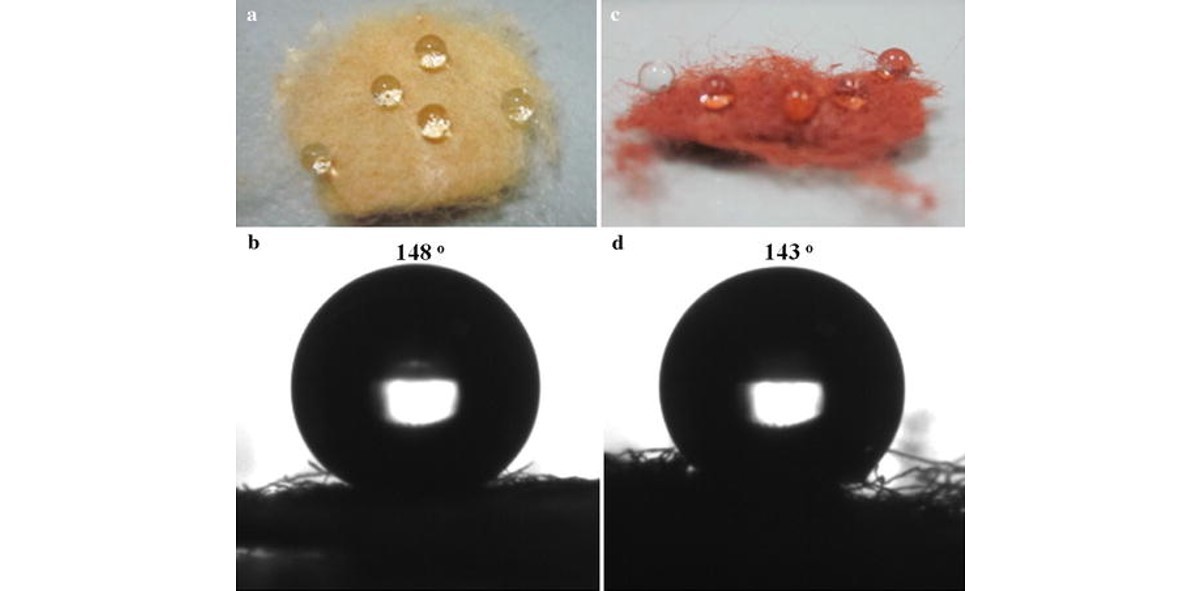Fabrication of Water-Repellent Cellulose Fiber Coated with Magnetic Nanoparticles under Supercritical Carbon Dioxide
Abstract
Hematite nanoparticle-coated magnetic composite fiber was prepared in supercritical carbon dioxide (scCO2). With the help of scCO2, cellulose did not need to be dissolved and regenerated and it could be in any form (e.g., cotton wool, filter paper, textile, etc.). The penetrating and swelling effect of scCO2, the slowing reaction rate of weak alkalis, and the template effect of cellulose fibers were discovered to be the key factors for the fabrication of ordered cellulose/Fe2O3 composite fibers. The structures of the composite fibers as well as the layers of Fe2O3 particles were characterized by means of scanning/transmission electron microscopy, X-ray diffraction, X-ray photoelectron spectroscopy, and Raman investigation. It was found that α-Fe2O3 granules which ranged from 30 to 85 nm with average diameter around 55 nm would be generated on the surface of cellulose fibers via potassium acetate, while irregular square prisms (ranged from 200 to 600 nm) which were composed of smaller nanoparticles (~10 nm) would be fabricated via urea. And, the obtained composite was highly water repellent with superparamagnetic or ferromagnetic properties.

<<全文链接>>

